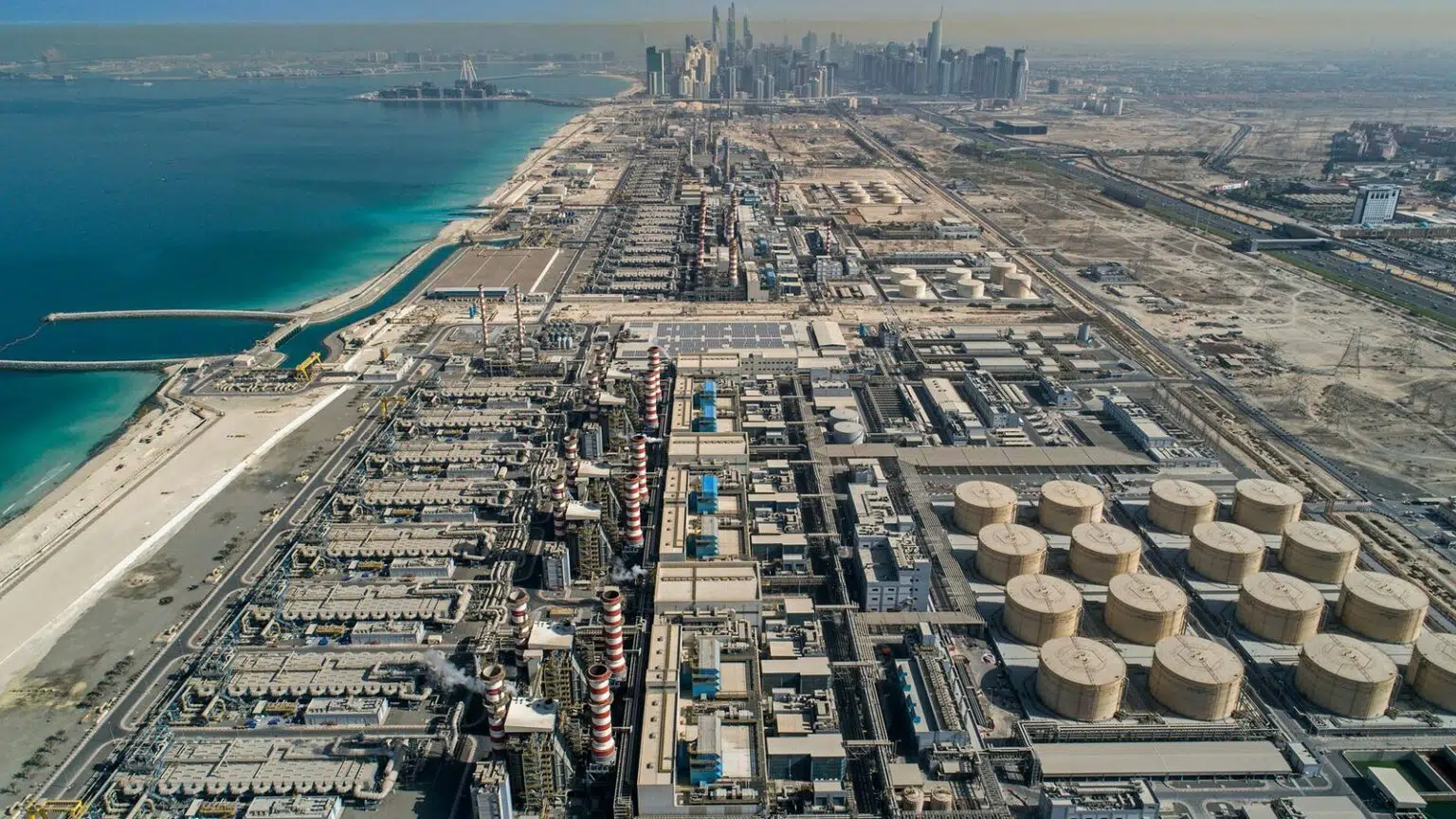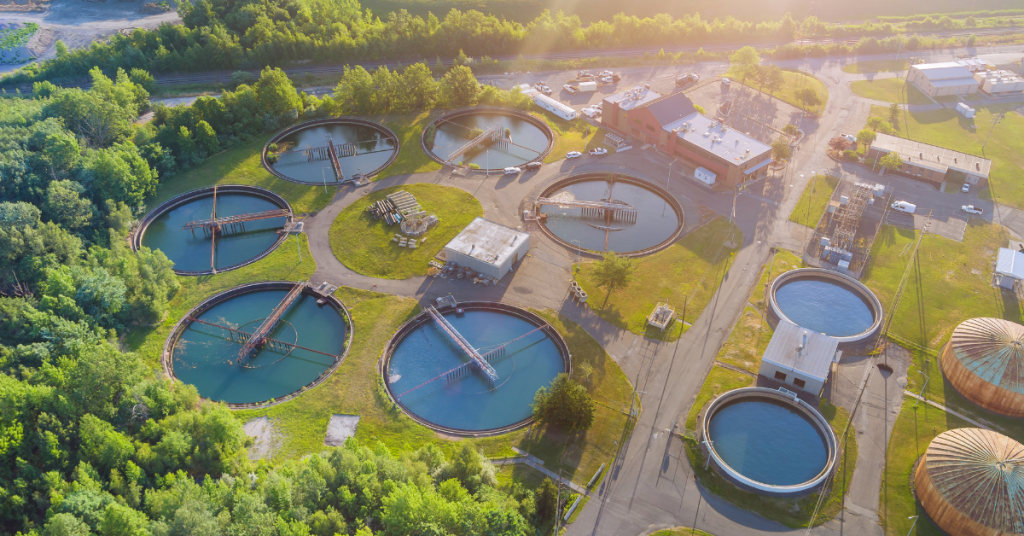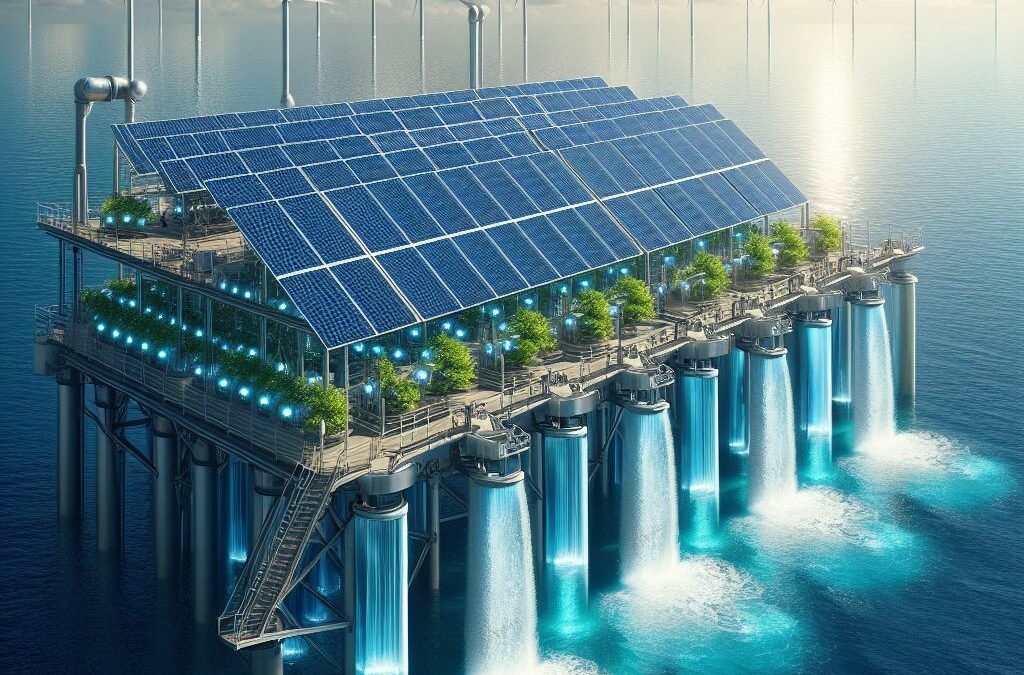
- Population growth, urbanization, and climate change become main reason of global water scarcity.
- Desalination as a solution and nuclear can produce it energy to suplay the needs of energy demand of the process.
- Public Perception, Acceptance, Regulatory, Infrastructure, and Waste Management still become challenges of nuclear sectors.
As global water scarcity becomes an increasingly pressing issue, innovative solutions are urgently needed to ensure a sustainable supply of fresh water. One promising approach is the use of nuclear energy for water desalination. This article will analyze the intersection of nuclear energy and desalination. Discussing the necessity of this integration, its benefits, and how it compares to other renewable energy sources.
The Need for Water Desalination
1. Global Water Crisis
According to the United Nations, over two billion people currently live in countries experiencing high water stress. Factors such as population growth, urbanization, and climate change exacerbate this crisis. Those factors leading to over-extraction of groundwater and deteriorating water quality. Traditional freshwater sources are becoming insufficient to meet the growing demands of agriculture, industry, and human consumption.
2. Desalination as a Solution
Desalination—removing salt and other impurities from seawater—offers a viable solution to water scarcity. Technologies such as reverse osmosis and multi-stage flash distillation are commonly employed to make seawater potable. However, these processes are energy-intensive, often relying on fossil fuels. Which can contribute to greenhouse gas emissions and further climate change.

The Role of Nuclear Energy in Desalination
1. Sustainable Energy Source
Nuclear power presents a low-carbon alternative for powering desalination plants. It provides a stable and consistent energy output, essential for large-scale desalination operations. Nuclear reactors generate significant amounts of energy that can be harnessed for various applications, including desalination.
2. Current Applications
Several countries have successfully integrated nuclear energy with desalination efforts. For instance, in the UEA, the Barakah Nuclear Power Plant is expected to support both electricity generation and water desalination. Additionally, countries like Japan and France have explored the use of nuclear reactors for desalination. It is showcasing the potential of this combination.
Benefits of Nuclear-Powered Desalination
1. Environmental Sustainability
Using nuclear energy for desalination significantly reduces the carbon footprint associated with traditional desalination methods. By avoiding the reliance on fossil fuels, nuclear-powered desalination contributes to global efforts to mitigate climate change. In contrast, many renewable energy sources, while cleaner than fossil fuels. It can be intermittent and less reliable, complicating their use for energy-intensive processes like desalination.
2. Efficiency and Reliability
Nuclear power plants operate continuously, providing a stable energy supply essential for desalination processes. This reliability is particularly crucial in regions facing chronic water shortages. Unlike solar and wind energy, which can be affected by weather conditions and time of day. Nuclear energy can consistently meet the high energy demands of desalination.
Baca Juga
- Prabowo’s Swasembada Energi Without New Renewable Energy Will Be Useless
- Indonesia’s New President Has A Military Background, Will Nuclear Become Energy?
3. Economic Viability
Integrating nuclear power into desalination projects can be economically advantageous. While the initial investment in nuclear infrastructure is substantial. The long-term operational costs can be lower than those of fossil fuel-based systems. Additionally, the stable energy costs associated with nuclear power can lead to predictable pricing for desalinated water. Making it more accessible for communities in need.
4. Dual Use of Resources
Utilizing nuclear energy for desalination exemplifies the dual use of resources. Maximizing the benefits derived from nuclear facilities. In regions with access to seawater and energy shortages. this approach provides both electricity and fresh water, addressing two critical needs simultaneously.

Comparison with Other Renewable Energy Sources
Solar and Wind Energy
While solar and wind energy are vital components of the transition to a sustainable energy future. They present challenges when integrated into desalination processes:
1. Intermittency: Solar and wind energy are inherently variable. Making it challenging to provide a consistent energy supply for desalination which requires continuous operation. This intermittency can necessitate costly energy storage solutions or backup systems.
2. Land and Resource Use: Large-scale solar and wind farms require significant land area. Which could be a limiting factor in densely populated regions or areas with competing land uses. Nuclear facilities, on the other hand, have a smaller land footprint relative to their energy output.
Baca Juga
- Black Fungus Survived and Grows at Chernobyl Site Full of Radioactive
- Ukraine: Chernobyl Brings Multi-Faceted Disaster On Nation’s Energy
3. Energy Density: Nuclear energy has a much higher energy density than solar or wind. Making it more efficient for powering large-scale operations like desalination plants. A relatively small nuclear reactor can produce enough energy to support significant desalination efforts.
Hydropower
Hydropower is another renewable source that provides stable energy. However, its feasibility is often constrained by geographical and environmental factors. Large dams can lead to significant ecological disruption, displacing communities and affecting local ecosystems. In contrast, nuclear power plants can be built in a variety of locations without the same level of environmental impact.

Challenges and Considerations
Despite its advantages, the integration of nuclear energy with desalination is not without challenges:
1. Public Perception and Acceptance
Public concerns about nuclear safety remain a significant barrier. High-profile accidents, like Chernobyl and Fukushima, have instilled fear and skepticism toward nuclear energy. Effective communication about advancements in nuclear safety. Also the environmental benefits of nuclear-powered desalination is essential to gain public support.
2. Regulatory and Infrastructure Hurdles
The establishment of nuclear facilities requires extensive regulatory oversight and investment in infrastructure. Policymakers must create frameworks that facilitate the safe and efficient development of nuclear-powered desalination plants.
3. Waste Management
Nuclear energy generates radioactive waste, which poses long-term disposal challenges. Developing sustainable waste management solutions is crucial to ensure the safe operation of nuclear facilities and to address public concerns.
Conclusion
Integrating nuclear energy with water desalination presents a unique and promising problem solution of water scarcity and climate change. By harnessing the stable and low-carbon energy provided by nuclear reactors. It can significantly reduce the environmental impact of desalination while ensuring a reliable supply of fresh water.
Compared to other renewable energy sources, nuclear energy offers unparalleled efficiency and reliability. Making it a vital part of our future water security strategy. To realize this potential, it is imperative to address public concerns, regulatory challenges, and waste management issues. By doing so, we can pave the way for a sustainable future that meets both our energy and water needs.
#ZonaEBT #SebarTerbarukan #EBTHeroes
Editor: Savira Oktavia
References
1. United Nations. (2021). “Water Scarcity”
2. International Atomic Energy Agency (IAEA). (2020). “Nuclear Desalination”
3. Barakah Nuclear Power Plant. (n.d.). Energizing the Future
4. World Nuclear Association. (2021). “Nuclear Power and the Environment”



Comment closed